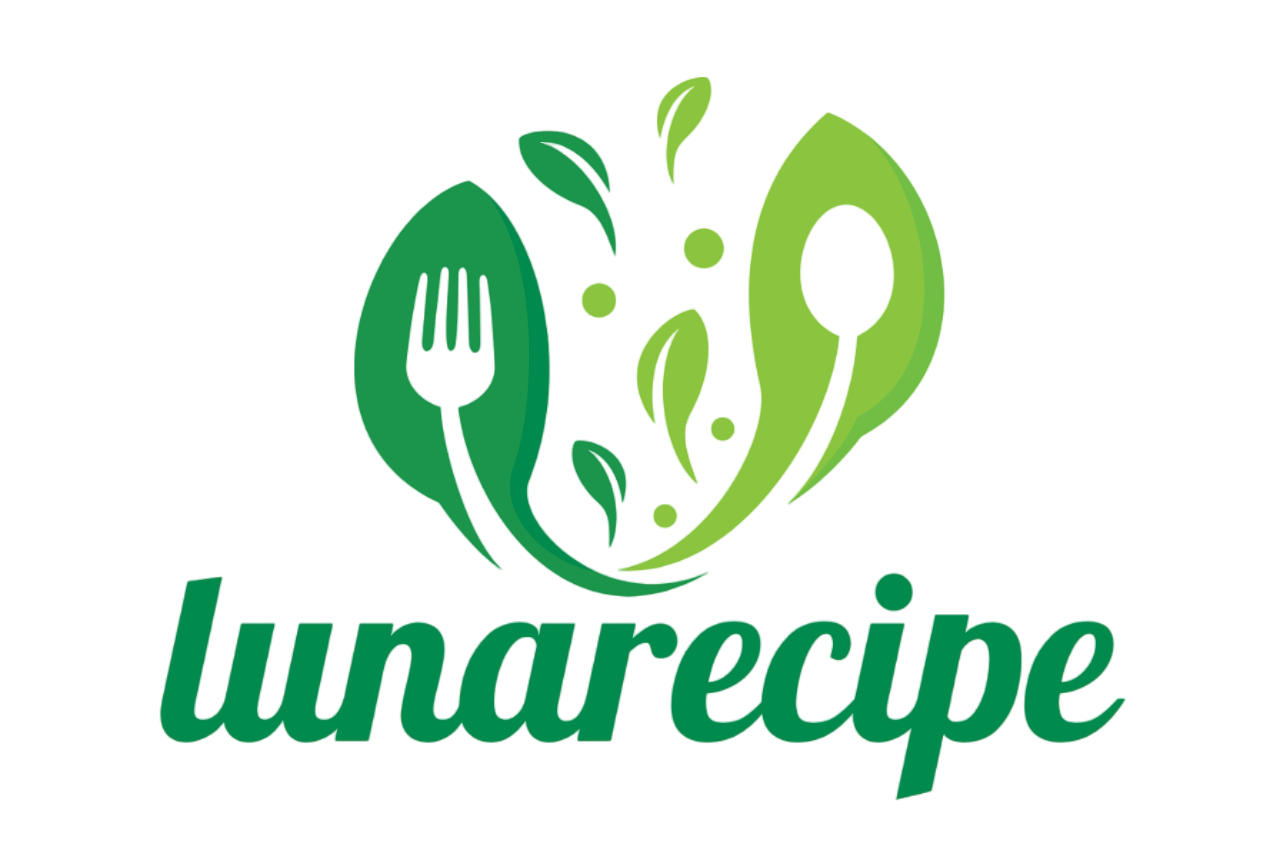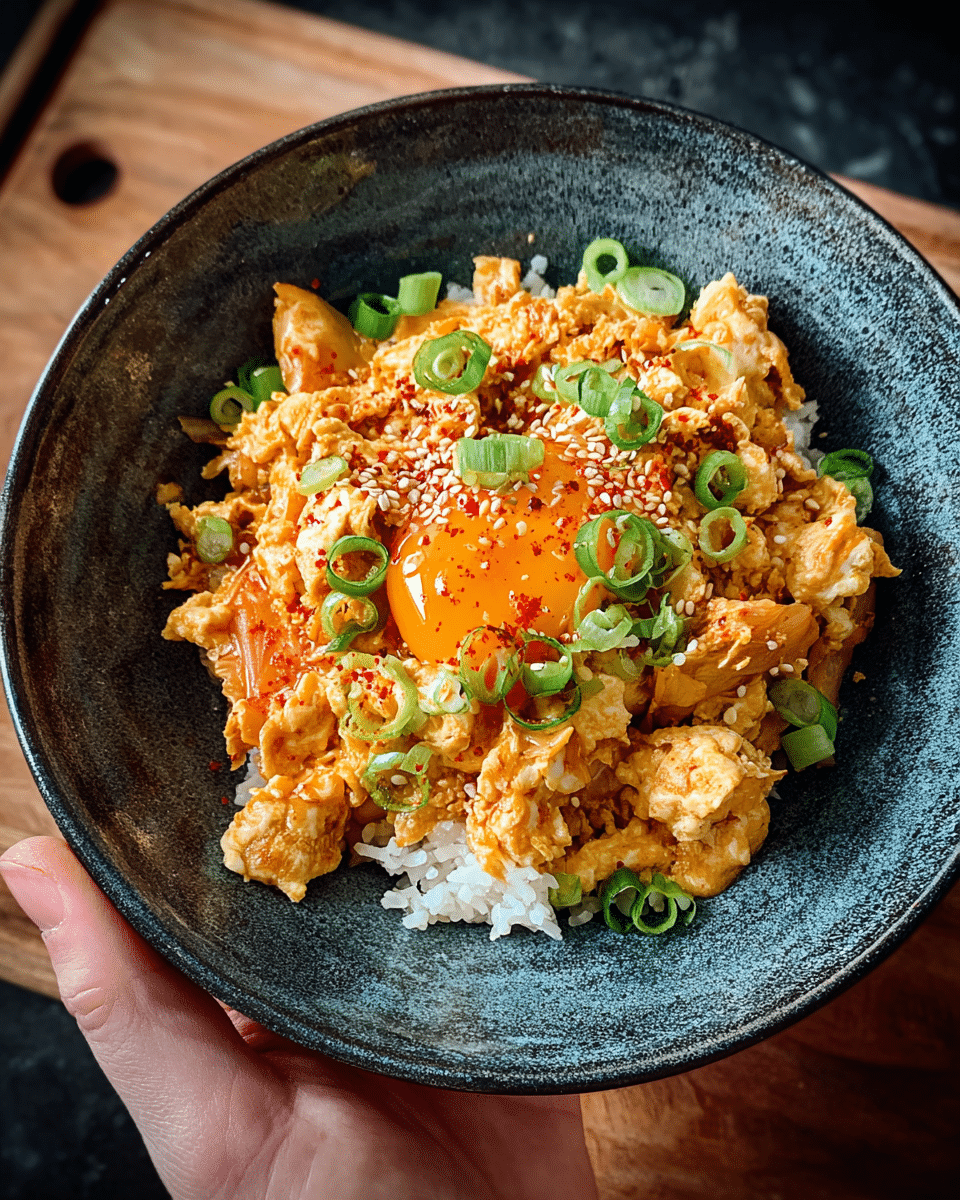Kimchi Scrambled Eggs bring a delightful twist to your usual breakfast with the bold and tangy flavors of kimchi, combined with the richness of scrambled eggs. The sesame oil and gochujang add an extra layer of depth to this already satisfying dish. It’s not just a breakfast — it’s an explosion of flavors on your palate!
Perfect for a busy morning or a light lunch, this recipe is quick, delicious, and filled with vibrant, spicy Korean flavors. You can adjust the amount of kimchi and gochujang to suit your spice level. Whether you pair it with a side of rice or enjoy it on its own, these Kimchi Scrambled Eggs are sure to become a favorite.
Full Recipe:
-
2 large eggs
-
2 tablespoons kimchi, chopped
-
1 tablespoon butter
-
1 tablespoon sesame oil
-
1 green onion, chopped
-
1/2 tablespoon gochujang (Korean chili paste)
-
Salt to taste
Directions:
-
In a small bowl, crack the eggs and whisk until well-beaten.
-
Heat the butter and sesame oil in a non-stick skillet over medium heat.
-
Add the chopped kimchi to the skillet and sauté for 2-3 minutes until the kimchi softens and becomes aromatic.
-
Stir in the gochujang and chopped green onions, cooking for another 1-2 minutes.
-
Pour the beaten eggs into the skillet, stirring gently and continuously to scramble the eggs.
-
Cook until the eggs are just set, then remove from heat.
-
Season with salt to taste, and serve immediately.
Prep Time: 5 minutes | Cooking Time: 5 minutes | Total Time: 10 minutes
Kcal: 180 kcal | Servings: 2 servings
History and Origin
Kimchi Scrambled Eggs is a modern fusion dish that draws its inspiration from traditional Korean cuisine. Kimchi, a staple in Korean households, has been around for over two thousand years. It’s made by fermenting vegetables, usually napa cabbage or radishes, with a mix of chili pepper, garlic, ginger, and fish sauce. Kimchi’s popularity has surged globally, particularly in recent decades as people have discovered its bold flavors and health benefits.
While scrambled eggs themselves are not uniquely Korean, they are a universal breakfast food. The combination of kimchi with scrambled eggs is a more contemporary creation, reflecting the trend of blending traditional ingredients with everyday meals. The dish plays into Korea’s growing global culinary influence, particularly in the realm of comfort food. Kimchi Scrambled Eggs might be considered a “fusion dish,” as it blends a beloved breakfast food with a key ingredient from Korean cuisine, offering a unique twist to classic scrambled eggs.
In South Korea, kimchi is often paired with rice and other side dishes, but the idea of mixing it into scrambled eggs is a more recent development, popularized by the rise of Korean food trends worldwide. It’s often seen as a quick and easy dish that delivers a satisfying combination of protein and probiotics, perfect for a quick meal or snack.
Variations and Adaptations
Kimchi Scrambled Eggs is highly adaptable, and there are many ways to make the dish your own. While the traditional version uses just kimchi and eggs, here are a few variations you can experiment with:
-
Vegan Kimchi Scrambled Eggs: For those following a plant-based diet, you can substitute the eggs with tofu or a commercially available egg replacer. Tofu, when crumbled and sautéed with kimchi, can mimic the texture of scrambled eggs while absorbing all the savory flavors.
-
Cheese Lovers’ Version: If you love cheese, you can add a bit of shredded cheese, such as cheddar or mozzarella, to the eggs just before they are fully cooked. The cheese will melt into the eggs, creating a creamy, comforting texture.
-
Spicy Kick: For those who enjoy an extra level of spice, you can boost the amount of gochujang, or even add fresh chili peppers to the mix. This will give the dish an intense, fiery heat that complements the tanginess of the kimchi.
-
Meat Add-ins: While the original dish is often vegetarian, some variations include meat like bacon, sausage, or even Korean-style pork belly (samgyeopsal) for added protein and richness. The salty, crispy bacon, in particular, pairs wonderfully with the kimchi.
-
Vegetarian and Low-carb: If you’re looking for a lower-carb or keto-friendly version, you can swap out the gochujang for a low-carb hot sauce and use extra vegetables like spinach, mushrooms, or onions to add bulk and flavor without the carbs.
Nutritional Information
Kimchi Scrambled Eggs is a nutritious and balanced dish, rich in protein, healthy fats, and essential vitamins. The dish offers several key nutritional benefits:
-
Eggs: Eggs are an excellent source of high-quality protein and contain all nine essential amino acids. They are also rich in vitamins like B12, vitamin A, and choline, which supports brain health. Additionally, eggs provide a good amount of healthy fats, especially if you use olive or sesame oil for cooking.
-
Kimchi: Kimchi is a fermented food that is packed with probiotics, which promote gut health and support a healthy digestive system. It also contains a wealth of vitamins A and C, as well as beneficial antioxidants. The fermentation process adds beneficial bacteria (lactobacilli) that can help balance your gut flora and strengthen your immune system.
-
Sesame Oil: Often used in Korean cooking, sesame oil is a good source of unsaturated fats, which are heart-healthy. It also contains antioxidants like sesamin, which may have anti-inflammatory properties.
-
Gochujang: This spicy paste adds a punch of flavor and some heat. While gochujang is made from fermented soybeans, chili peppers, and rice, it contains some sugar, so it’s best to use in moderation.
Overall, Kimchi Scrambled Eggs provide a great balance of macronutrients—protein from the eggs, healthy fats from sesame oil, and fiber and probiotics from the kimchi. For a complete nutritional breakdown, it is recommended to consider portion size and any additional ingredients added, such as cheese or meat.
Serving Suggestions and Pairings
Kimchi Scrambled Eggs is a versatile dish that can be enjoyed on its own or paired with a variety of sides. Here are a few ideas for how to serve this dish:
-
With Rice: Traditionally, Korean dishes like kimchi are served with steamed white or brown rice. For a heartier meal, serve your Kimchi Scrambled Eggs over a bed of warm, fluffy rice. The rice helps to mellow out the spice from the kimchi and gochujang.
-
On Toast: For a quick and easy breakfast, serve the scrambled eggs on a slice of toasted sourdough or whole-grain bread. The crispy texture of the toast provides a nice contrast to the creamy eggs.
-
With Avocado: Add a slice of creamy avocado on top of your scrambled eggs for a fresh, rich flavor. The mildness of the avocado pairs perfectly with the tangy, spicy kimchi.
-
With Pickled Vegetables: Pickled vegetables, such as radishes or cucumbers, make an excellent accompaniment to this dish. The crunchy, vinegary notes of the pickles contrast nicely with the savory, spicy eggs.
-
Pairing with Drinks: For beverages, pair Kimchi Scrambled Eggs with a cold glass of iced green tea or a crisp, refreshing lager beer. If you prefer a non-alcoholic option, kombucha, with its tangy flavor and probiotics, would be an excellent match.
Tips and Tricks for Success
To make the perfect Kimchi Scrambled Eggs, here are some tips to keep in mind:
Advertisement
-
Don’t Overcook the Eggs: The key to perfect scrambled eggs is cooking them over low to medium heat, stirring gently and constantly. This will help create soft, creamy eggs. Overcooking can result in dry, rubbery eggs.
-
Use Well-fermented Kimchi: For the best flavor, make sure your kimchi is well-fermented. Fresh kimchi may lack the depth of flavor that older kimchi provides, and the fermentation process also enhances the probiotics.
-
Customize to Your Heat Tolerance: Kimchi can vary in spiciness depending on how it’s made, and the gochujang adds even more heat. Adjust the amount of gochujang or kimchi according to your preferred spice level.
-
Use a Non-stick Pan: Since you’re cooking eggs, using a non-stick pan will make the process smoother and prevent the eggs from sticking.
-
Experiment with Add-ins: Feel free to get creative with the dish by adding extra vegetables, meats, or cheeses to suit your preferences.
Potential Health Benefits
Kimchi Scrambled Eggs offer several health benefits, thanks to the nutrient-rich ingredients:
-
Probiotics for Gut Health: Kimchi is a fermented food, and fermented foods are rich in probiotics, which support healthy digestion and immunity. The live cultures found in kimchi can help maintain a healthy balance of gut bacteria.
-
High in Protein: Eggs provide a high-quality source of protein, which is essential for muscle repair, immune function, and overall health. Protein also helps keep you feeling full longer, making this dish a satisfying choice for breakfast or lunch.
-
Rich in Antioxidants: Both kimchi and gochujang contain antioxidants that can help fight oxidative stress and reduce inflammation in the body.
-
Heart-healthy Fats: The sesame oil used in this dish is rich in unsaturated fats, which can help improve cholesterol levels and support heart health when consumed in moderation.
Conclusion
Kimchi Scrambled Eggs is a flavorful, easy-to-make dish that brings the bold flavors of Korean cuisine into your kitchen. Whether you enjoy it for breakfast, brunch, or a quick weeknight meal, the combination of kimchi, eggs, and gochujang is sure to satisfy your taste buds. This dish not only offers great taste but also provides numerous health benefits, thanks to its probiotic-rich ingredients and high protein content. Give Kimchi Scrambled Eggs a try, and elevate your everyday scrambled eggs to something extraordinary!






